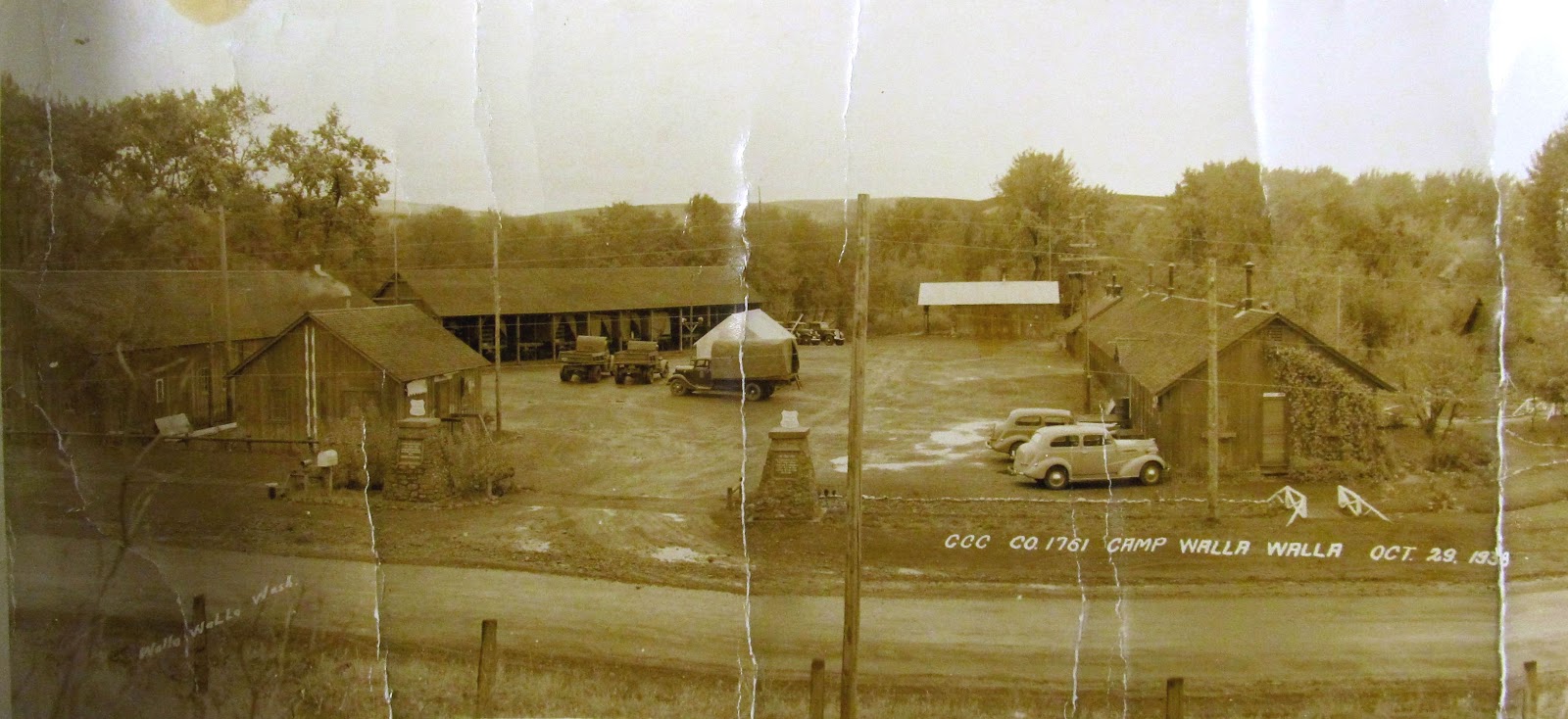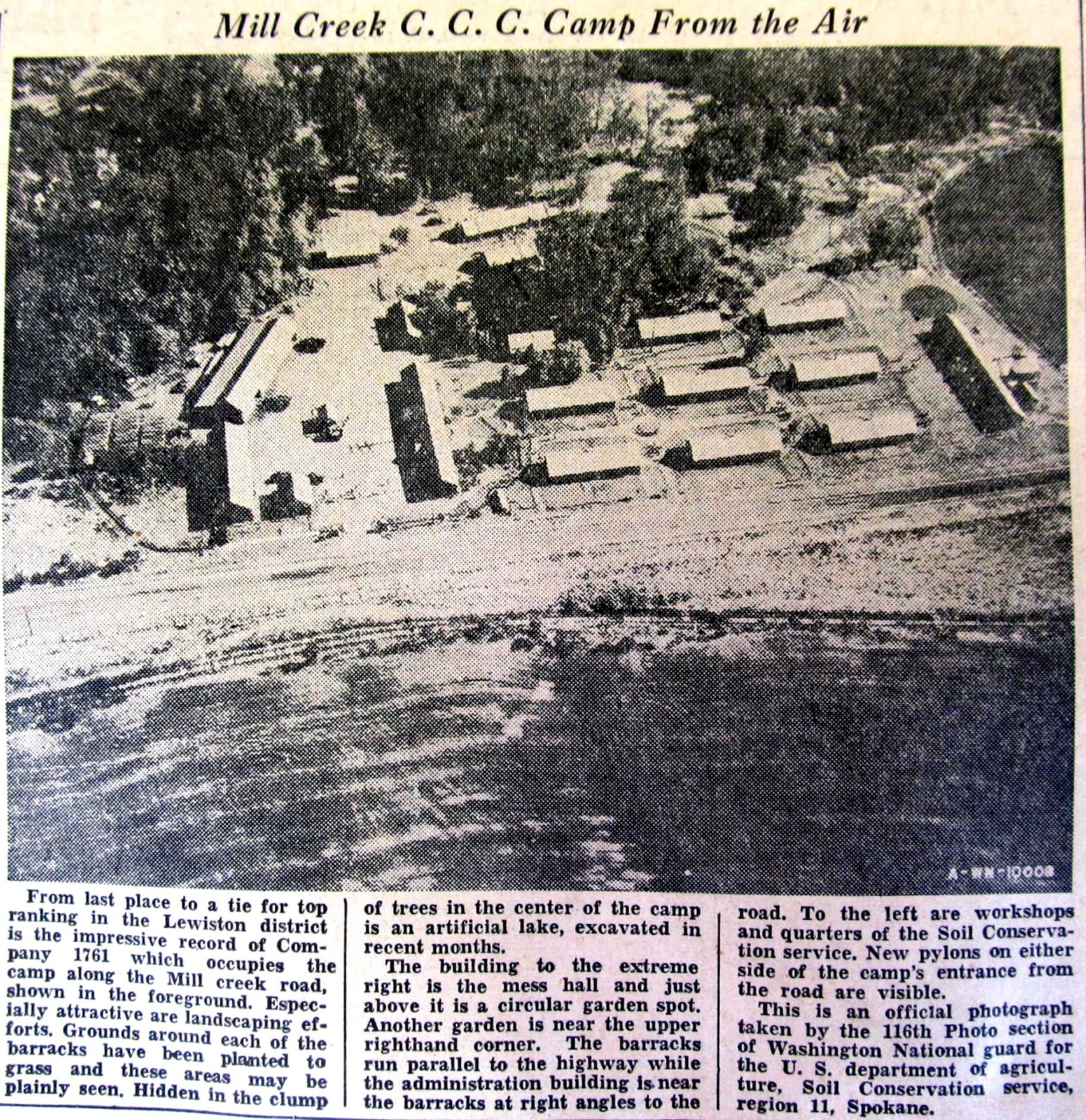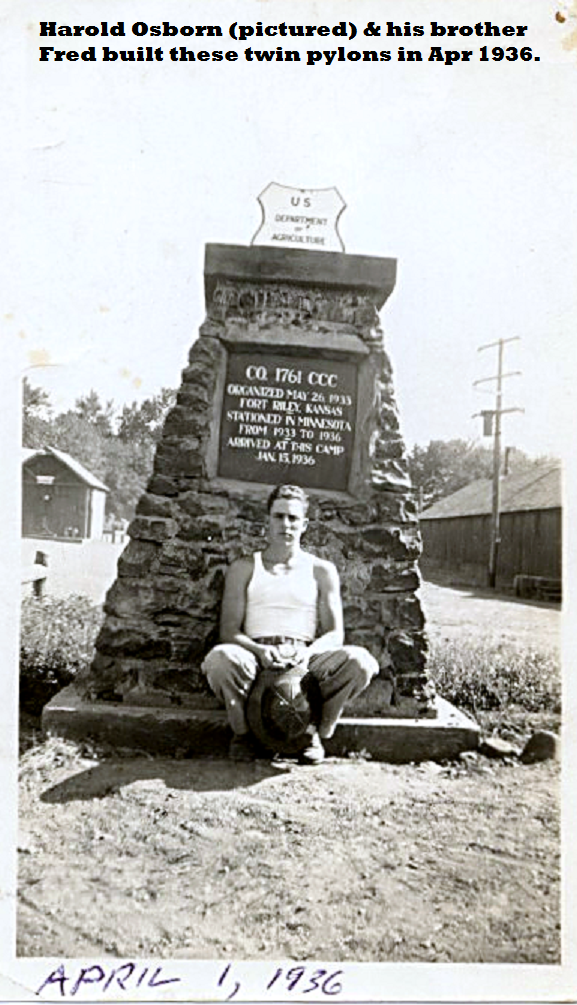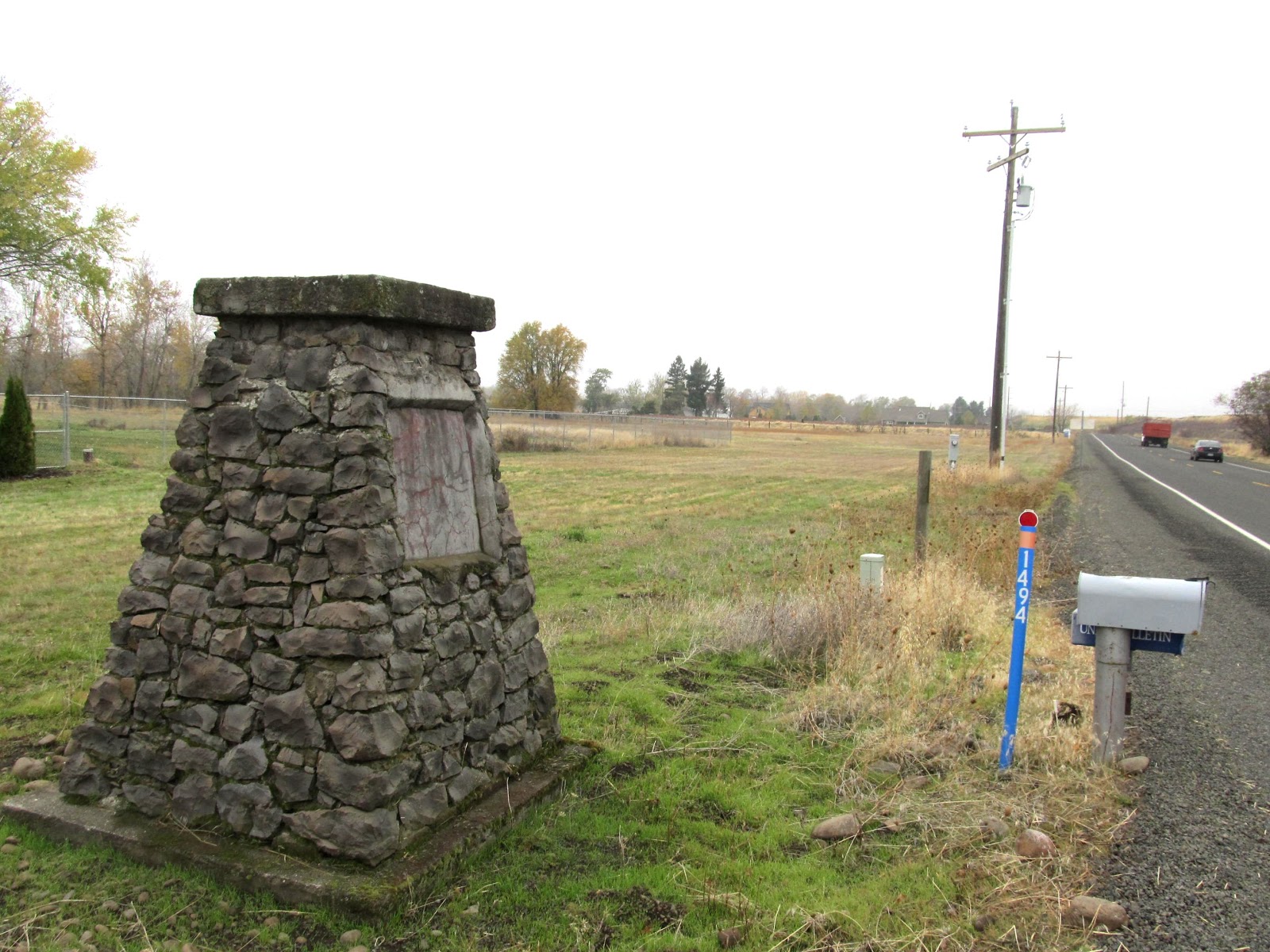As you safely park along the side of the road to search for the cache, take a look on the opposite of the road where you'll notice two concrete pillars that frame the entrance to the driveway of a private residence. You may wonder what the story is there? Are they of some historical significance? Or a simple decorative choice? After years of driving past these things I finally did some research and found out that they do in fact remain as a piece of the interesting history of the Walla Walla area.
These pillars were a part of the construction of the Civilian Conservation Corps (CCC) Camp Walla Walla. One of the 13 camps in the Lewiston district, located 4 miles east of WW on Mill Creek Road from Nov 1935 to 1939.

Walla Walla CCC Camp-- The Civilian Conservation Corps (CCC) was a public work relief program that operated from 1933 to 1942 in the United States for unemployed, unmarried men from relief families, ages 18–25. Robert Fechner was the head of the agency. A part of the New Deal of President Franklin D. Roosevelt, it provided unskilled manual labor jobs related to the conservation and development of natural resources in rural lands owned by federal, state and local governments. The CCC was designed to provide jobs for young men in relief families who had difficulty finding jobs during the Great Depression in the United States while at the same time implementing a general natural resource conservation program in every state and territory. Maximum enrollment at any one time was 300,000; in nine years 2.5 million young men participated in the CCC, which provided them with shelter, clothing, and food, together with a small wage of $30 a month ($25 of which had to be sent home to their families).
The American public made the CCC the most popular of all the New Deal programs. The CCC also led to a greater public awareness and appreciation of the outdoors and the nation's natural resources; and the continued need for a carefully planned, comprehensive national program for the protection and development of natural resources. During the time of the CCC, volunteers planted nearly 3 billion trees to help reforest America, constructed more than 800 parks nationwide and upgraded most state parks, updated forest fire fighting methods, and built a network of service buildings and public roadways in remote areas. Despite its popular support, the CCC was never a permanent agency. It depended on emergency and temporary Congressional legislation for its existence. By 1942, with World War II and the draft in operation, need declined and Congress voted to close the program.



I hope you enjoy this cache. It shouldn't be too hard. Please respect the area and replace the cache as good or better than you found it. There is no need to enter the property across the road, as it is a private residence, you will be able to see the concrete pillars well enough from the cache area. Thanks, and have fun!